We offer robust rubber mining hoses engineered to withstand the harshest conditions. Designed for supreme abrasion resistance, high pressure, and corrosive slurries, our hoses ensure reliable transfer of water, air, and materials. Trust our durable solutions for optimal performance and extended service life in demanding mining operations, enhancing safety and efficiency.
We allow you to select specific rubber compounds for the hose’s inner tube and cover, offering superior resistance to abrasion from sharp rocks, corrosive chemicals, or extreme temperatures. Our expertise ensures you get materials perfectly suited for handling abrasive slurries, high-pressure water, or aggressive air transfer in any mining industry.
We provide rubber mining hoses in a wide range of internal diameters to optimize flow rates for various media, whether it’s water, air, or abrasive slurries. Furthermore, we precisely cut hoses to your desired length, minimizing waste and ensuring seamless integration into your existing pipeline systems for efficient operations.
We customize the reinforcement layers within the rubber mining hose, typically using high-tensile textile plies or steel wire, to achieve the exact pressure rating and flexibility required. This ensures the hose can withstand immense internal pressures and external impacts common in mining, providing a robust and long-lasting solution for your specific application.
We offer a diverse selection of end fittings and couplings, designed to withstand the harsh conditions of mining and ensure secure, leak-free connections. Options include robust flanged ends, quick-disconnect couplings, or heavy-duty swaged fittings, all chosen to guarantee compatibility with your equipment and enhance operational safety and reliability.
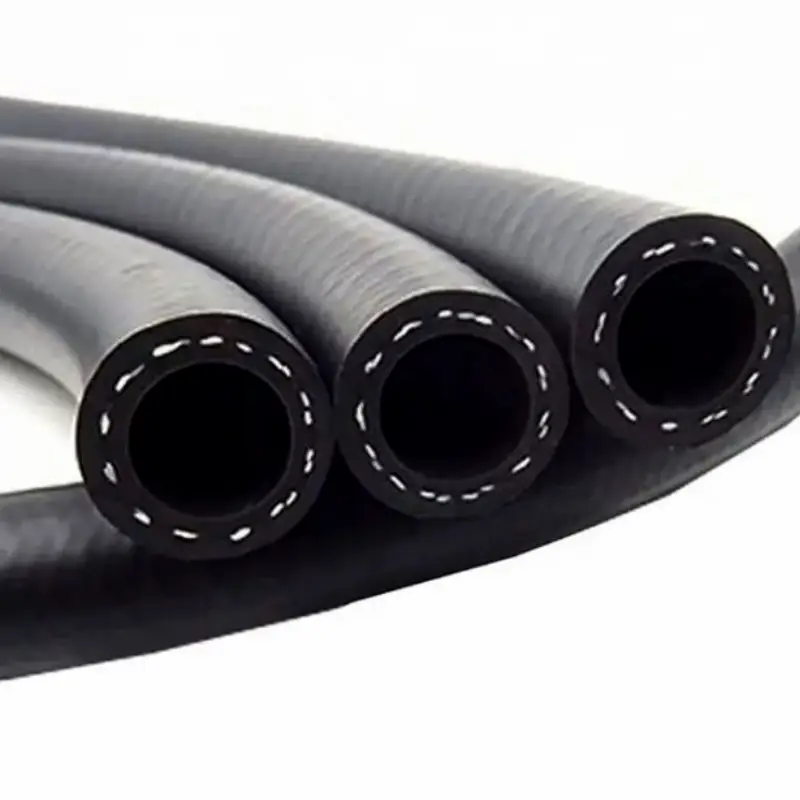
Kingdaflex provides both reinforced PVC and specialized rubber mining hoses. Our reinforced PVC hoses offer excellent chemical resistance, flexibility, and a lighter weight, ideal for various fluid and air transfer in less severe mining conditions. For the most extreme applications, our robust rubber mining hoses deliver superior abrasion, pressure, and temperature resistance, ensuring maximum durability and safety.
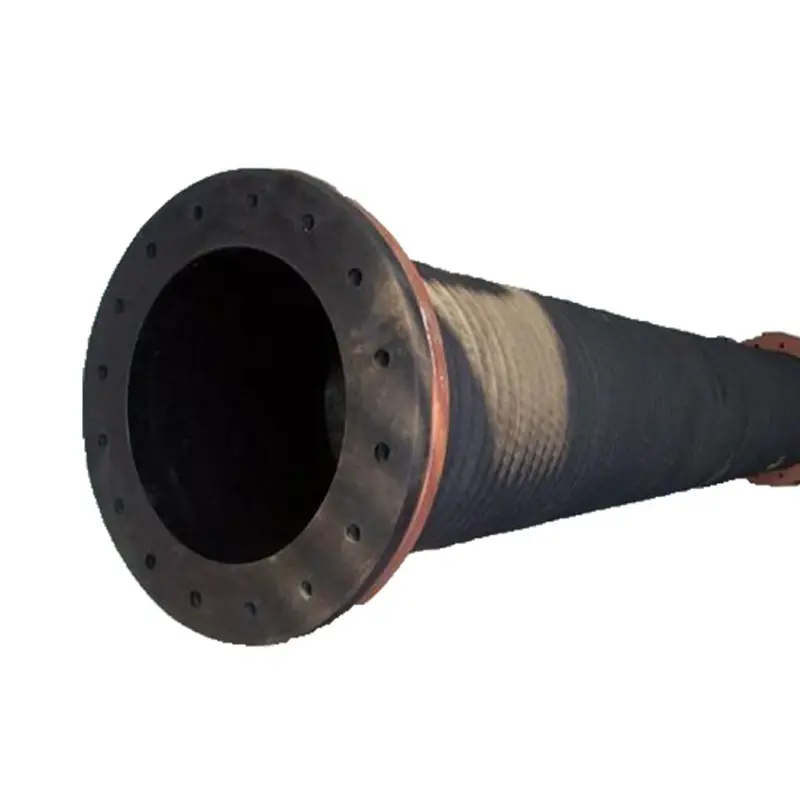
We offer premium mining slurry hoses, specifically engineered for the abrasive challenges of material transfer in mining and quarrying. Our hoses feature ultra-high-quality blended rubber tubes and robust reinforcement, ensuring exceptional resistance to wear, impact, and high pressure. Designed for slurries, mud, sand, and dry materials, they provide reliable, long-lasting performance.
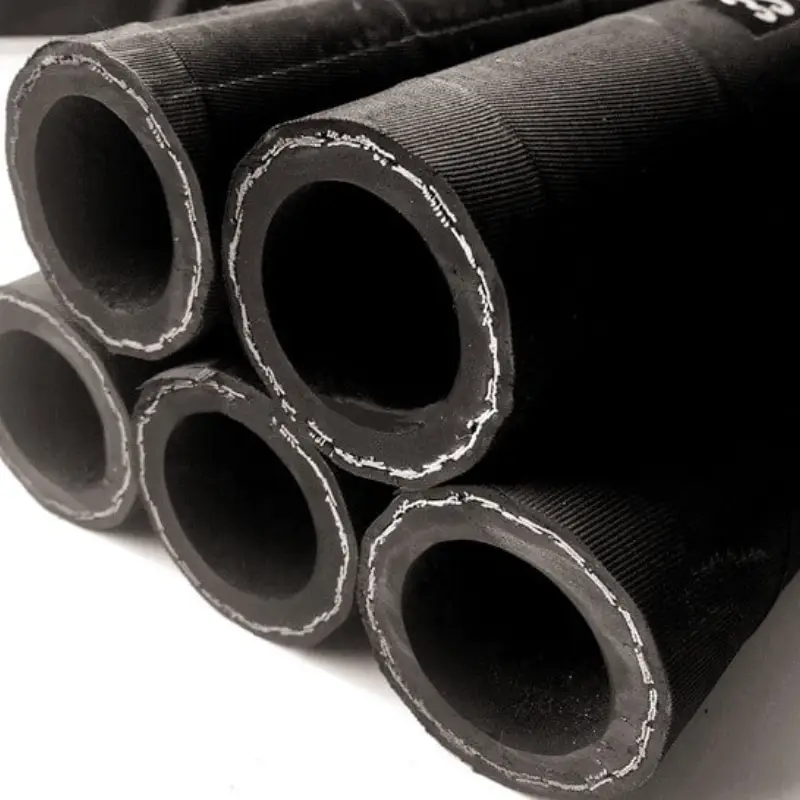
We offer specialized hydraulic hoses for mining, engineered to endure the most demanding underground and surface conditions. Our hoses provide exceptional resistance to abrasion, high pressure, and corrosive materials, ensuring reliable fluid power for heavy machinery like drills, excavators, and loaders. Trust Kingdaflex for durable solutions that minimize downtime and maximize productivity in your mining operations.
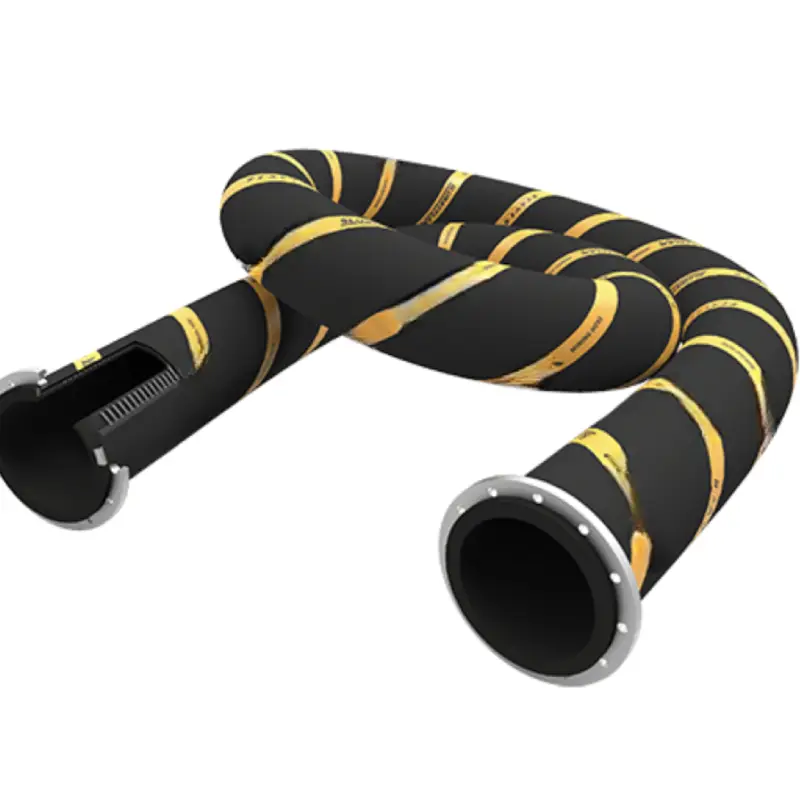
We offer super flexible mining rubber hoses, specifically engineered for challenging, dynamic mining environments. These flexible rubber hoses boast exceptional bend radius and pliability, making them ideal for tight spaces and applications requiring frequent movement. Despite their flexibility, they maintain superior abrasion resistance and high-pressure capabilities, ensuring reliable and long-lasting performance for various mining fluid transfer needs.
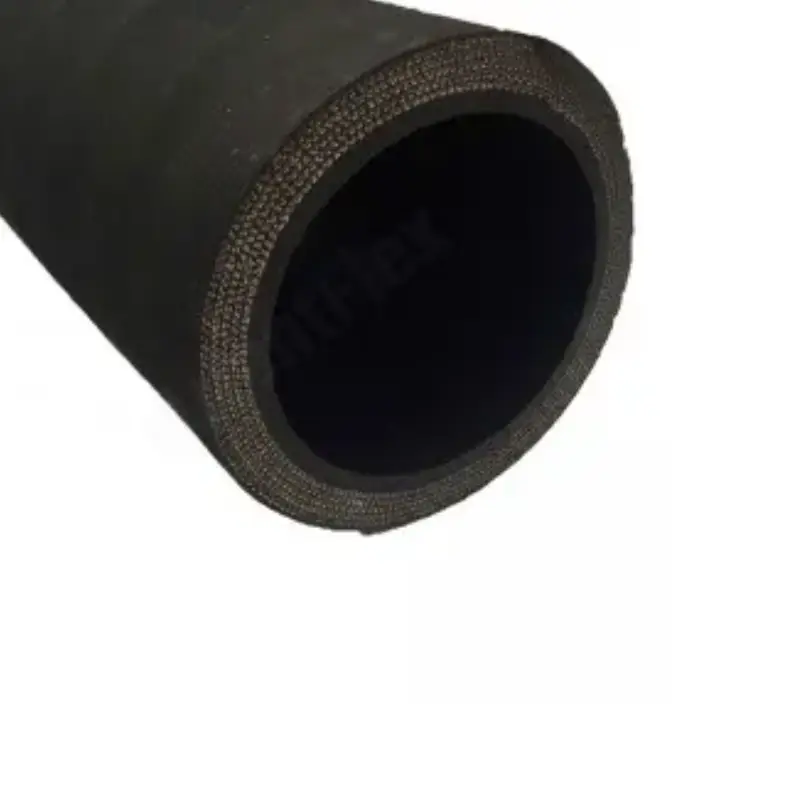
We offer specialized solid mining abrasion rubber hoses, engineered for the most demanding mining applications. Featuring exceptionally thick, wear-resistant rubber compounds in the tube and cover, these hoses excel at conveying highly abrasive slurries, rocks, and aggregate. Designed for maximum longevity and minimal downtime, they provide reliable performance in harsh, high-impact environments, ensuring operational efficiency and safety.
A rubber mining hose is a specialized, heavy-duty industrial hose specifically engineered to withstand the extremely harsh and demanding conditions found in mining operations.
Unlike general-purpose hoses, it features a rugged construction with an exceptionally abrasion-resistant inner tube (often made of natural or synthetic rubber), multiple layers of high-tensile reinforcement (such as textile plies or steel wire), and a durable outer cover designed to resist cuts, abrasion, ozone, UV, and chemicals.
These rubber mining hoses are crucial for safely and efficiently transferring a variety of materials, including highly abrasive slurries, high-pressure water, air, and even chemicals, in both underground and surface mining environments.
Mining rubber hoses operate in some of the most challenging environments on Earth, demanding exceptional durability and specialized properties to ensure safety, efficiency, and longevity. They are constantly subjected to extreme conditions, so their construction must be incredibly robust.
Here’s what mining rubber hoses require:
Superior Abrasion Resistance: This is paramount, as they frequently convey highly abrasive materials like slurries, rocks, sand, and gravel. The inner tube especially needs to resist wear and tear to prevent premature failure.
High Pressure Capability: Many mining applications involve significant fluid pressures, so hoses must have strong reinforcement layers (textile plies, steel wire) to prevent bursting and maintain integrity under high operational loads.
Flexibility and Kink Resistance: Despite their robust construction, hoses need to remain flexible enough for installation and to accommodate movement and vibration without kinking, which can restrict flow and damage the hose.
Chemical Resistance: Depending on the materials being conveyed, hoses must be resistant to various chemicals, acids, and hydrocarbons that may be present in mining processes to prevent degradation of the hose material.
Temperature Extremes Tolerance: Mines can experience a wide range of temperatures, from freezing cold to intense heat. Hoses must maintain their performance characteristics across these temperature fluctuations.
Weather and UV Resistance: For surface mining operations, the outer cover needs to withstand prolonged exposure to sunlight (UV radiation), ozone, and various weather conditions without cracking or deteriorating.
Safety Features (e.g., Anti-Static, Flame Retardant): In underground mining, specific safety certifications like MSHA (Mine Safety and Health Administration) are often required, necessitating features like anti-static properties to prevent sparks and flame retardancy to minimize fire risks.
Robust End Connections: The fittings and couplings must be incredibly strong and secure to prevent leaks and withstand the pulling forces and vibrations associated with heavy-duty mining equipment.
Mining rubber hoses are essential components across various stages and types of mining operations, serving as flexible lifelines for the movement of critical materials and fluids. Their robust design makes them indispensable in environments where rigid piping is impractical or susceptible to damage.
Here are some key applications for mining rubber hoses:
Slurry Transfer: This is arguably the most common application. Hoses are used to transport highly abrasive slurries, which are mixtures of ground ore, rock, sand, gravel, and water, from processing plants to tailings dams or between different processing stages. This includes mineral processing, sand and gravel transfer, and tailings lines.
Dredging: In dredging operations, especially for sand, gravel, or mineral extraction from bodies of water, specialized dredge hoses (often with built-in buoyancy) are used to suction or discharge large volumes of abrasive material.
Water Supply and Dewatering: Mines require vast amounts of water for various processes like dust suppression, cooling, and washing. Hoses are used for both supplying fresh water to different areas and for dewatering, which involves pumping excess water out of the mine to maintain safe working conditions.
Air and Ventilation: Compressed air hoses are vital for powering pneumatic tools, operating machinery, and providing ventilation in underground mines. They must be durable to resist internal pressure and external damage.
Chemical Transfer: In certain mineral processing steps, chemicals (like acids or reagents) are used. Specialized chemical-resistant mining hoses are employed to safely transfer these corrosive substances.
Tailings and Waste Disposal: After valuable minerals are extracted, the remaining waste material (tailings) is often transported via rubber hoses to designated disposal areas.
Ventilation and Dust Control: Hoses are used in dust suppression systems, spraying water or other solutions to control airborne dust particles, which is crucial for worker health and safety in often enclosed or dusty mining environments.
Backfill Operations: In some mining methods, waste rock or tailings are mixed with cement to create a backfill material, which is then transported via hoses to fill mined-out areas, providing ground support.
Choosing the right mining rubber hose is a critical decision that directly impacts the safety, efficiency, and uptime of mining operations. It’s not a one-size-fits-all scenario; instead, a careful assessment of the application’s specific demands is essential. The “STAMPED” acronym is a widely recognized guide for this selection process, ensuring all crucial factors are considered to prevent premature hose failure, costly downtime, and potential safety hazards in harsh mining environments.
Size (ID, OD, Length): Determine the required inner diameter (ID) for optimal flow rate of the material being conveyed (slurry, water, air), the outer diameter (OD) for fitting into confined spaces or existing systems, and the precise length needed to avoid excessive tension or slack.
Temperature (Internal & External): Consider both the temperature of the material flowing through the hose and the ambient external temperature of the mining environment. Hoses must maintain their flexibility and integrity across the full operating temperature range.
Application (Flexing, Static, Media Type): Understand how the hose will be used – will it be static or subjected to constant flexing and movement (like on a dredge)? Also, specify the type of media (e.g., highly abrasive slurry, corrosive chemicals, high-pressure water, compressed air) to ensure material compatibility.
Material (Hose Construction & Compound): Select the appropriate rubber compound for the inner tube (e.g., natural rubber for abrasion, EPDM for chemicals), reinforcement (textile, steel wire for pressure), and outer cover (for abrasion, UV, ozone, and weather resistance) based on the application’s demands.
Pressure (Working & Burst): Identify the maximum working pressure the hose will experience and ensure the chosen hose has a higher working pressure rating for a safety margin. Also, consider the burst pressure, which is typically much higher than the working pressure.
Ends (Fittings & Couplings): Choose compatible end fittings and couplings that will securely connect the hose to existing equipment. These must withstand the same pressures and conditions as the hose itself, ensuring a leak-free and reliable connection.
Delivery (Availability & Certifications): Consider the availability of the specific hose and fittings from the supplier, especially for urgent replacement needs. Also, ensure the hose meets relevant industry certifications and safety standards, such as MSHA (Mine Safety and Health Administration) for underground mining applications.